
The Ultimate Guide to Swimming
Swimming is an incredible form of fitness and exercising activity. It can also be quite fun, exciting and exhilarating if done regularly and correctly. Whether you want to become a professional athlete, stay fit or just take a dip for leisure, swimming is hands down one of the best life skills to learn.Do you want to get your feet wet in the world of swimming? Are you looking for ways to up your swimming game? Are you searching for swimming advice, beginner tips, hacks, and other tricks to add up your sleeves?
If this sounds like you, this article is specially written for you. Herein, we shall walk you through just about anything you need to know about swimming.
We shall cover a wide range of swimming topics, including its remarkable benefits, swimming for fitness (calories burned), how to improve your breathing techniques, how to beat your fear of water, the dos & don’ts of swimming and the best swimming gear & kits for both adults and kids.
- How to learn Swimming as a Beginner
- Top 7 Health Benefits of Swimming
- How many Calories does Swimming Burn
- How to Swim in Winter
- How to Breathe while swimming and what's the Diet Plan
- How to overcome the fear of Water
- Swimming Gear for both Adults and Kids
- How to Open Eyes Underwater Without Goggles
- Difference Between Swimming in Pool and Swimming in Open Water
- Dangers of Thunderstorms and Precautions in Open Water
- How to Perfectly Crawl or Dive in Swimming without Injuring Yourself
Let’s plunge right into it, shall we?
How to Start as a Beginner and learn Swimming - Key Tips
Adapting to swimming is easier said than done because we have gotten too used to walking and doing things on dry land. The good news is that with practice and a few beginner tips, you can learn to swim in no time. Even better, swimming in and of itself is a low-impact, full-bodied workout that’ll deliver almost instant fitness and health results. In fact, if you practice swimming frequently and consistently, you will definitely witness progress within 30 or even fewer days.Here are some beginner swimming tips that might come in handy.
Commit to Practicing Swimming over the Period of at Least 3 Weeks
According to swimming experts, it’s crucial that you dedicate to doing a batch of 10 (or more) swims every day over the period of your first 21 days. You’ll be happy to see how your body will start adapting to swimming and getting into the rhythm.It All Starts with your First Strokes
You cannot just dive into the pool and start splashing water around. Swimming is an art and skill that calls for learning how to do strokes and maintaining your form. That’s why you might want to work with a swimming instructor if your first strokes are not up to scratch. Even better, why not take a beginner’s swimming class?Whether you are a kid or an adult, there are many programs that teach strokes. However, if you decide to do it on your own, begin with freestyle strokes which looks like front crawls. Don’t forget to take it easy on yourself. Swim for as many minutes as you can, then give yourself plenty of resting time. Repeat freestyle strokes for at least 20 mins, making each time different.
The chances are that you will be winded after a minute or sooner. Don’t hesitate to rest and try to find your wind. Good thing stamina will return in no time.
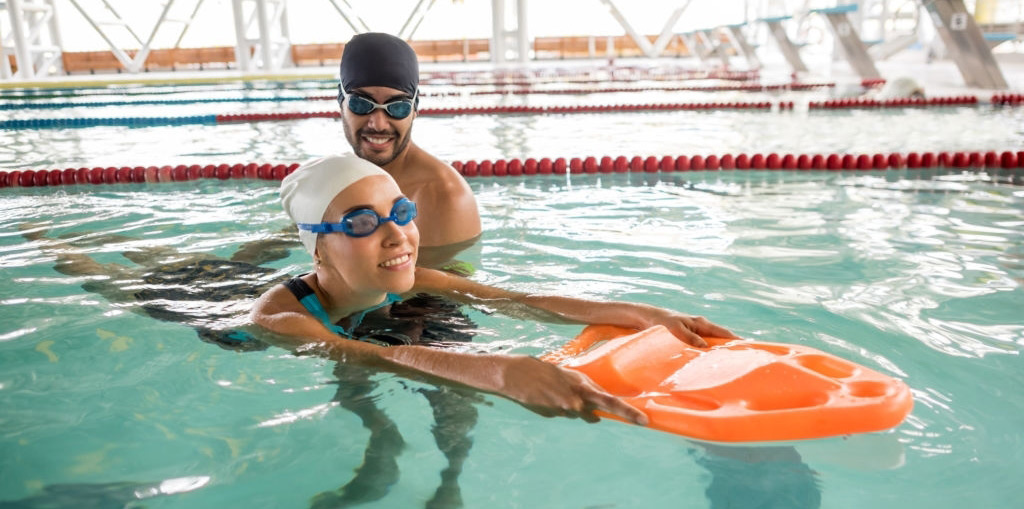
Get the Right Swimming Practice Tools
There are a ton of swimming-aiding tools for beginners that’ll help you improve your strokes, take your form to the next level and build endurance/stamina. Perhaps the most important ones are kickboards which will come in handy to ensure that your upper frame is resting while you work your limbs and practice your strokes.Another great tool is the pull-buoy, a foaming apparatus that resembles number 8 in shape. You will tuck the pull buoys between your legs, supporting your lower body so you can stay on top of your strokes.
If you tend to sink and breathing is a problem for you, don’t forget to get a swimming snorkel. This nifty device enables you to breathe easily while maintaining your body in the optimal swimming position.
Ensure your Goggles Stay On
If you want to learn and get comfortable swimming, make sure that your goggles stay over your eyes for 60 minutes or longer before removing them. Most swimmers put their goggles up after every set. As a newbie, don't do it.Practice Sighting
Making sure that you can see is a crucial part of swimming, especially in open waters. Try to pop out of the water and look up 2-3 times every few laps or after every 25 yards.Get your Form Right
When swimming, make sure that your feet, hips and head form one continuous line. For instance, if your feet tend to ride low the rest of the body, you will suffer from increased drag which will make it hard for you to swim forward. If this happens when practicing, dip your head down a little to avoid your feet from slumping.Consistency Matters
When learning to swim, it’s paramount that you monitor and try to make progress every passing day. That’s why consistency is everything. Start with 10 sessions over the first 3 weeks. Each session should comprise a warm-up, blocks of swims & rests, and end with another warm-up. If possible, keep your intervals the same and ensure to rest for 20 seconds before getting right back to practicing.Don’t Kick Too Much
Your upper body is the engine that powers your swimming, but don’t take the lower body for granted. Don’t kick too many times because this will usurp all your energy and send your heart beating like crazy. A gentle, light leg tapping will do the just fine.Stick to 10% Rule
The 10 percent rule is the golden rule that runners usually use. It’s what it sounds like - don’t increase your weekly swimming distance or intervals by over 10%. If you did 10 laps this week, don’t do more than 11 laps next week. This might seem like an extreme move, but it usually works like a charm. It helps you keep injuries at bay and ensure that your progress is consistent.Lane Etiquette is Crucial
A swimming pool is a shared resource. Learn the unwritten (or written) rules about how to practice/swim with others. If 3 or more of you are sharing a single lane, take advantage of the so-called circle swimming, which is a fancy way of saying take turns.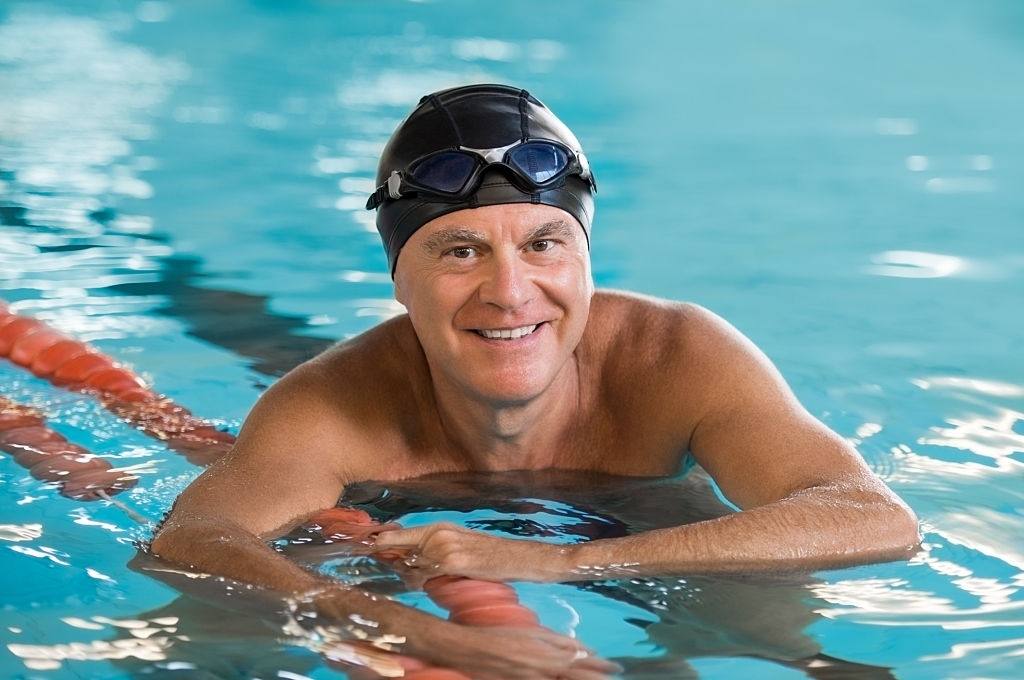
Why Swim - Top 7 Health Benefits of Swimming
Swimming is an impact-less, full-spectrum exercise that is not only easy and affordable but also massively beneficial when it comes to boosting your health and fitness. But these aren’t the only perks that come with swimming - here are 7 most important benefits:(1) Swimming is Low-Impact yet Highly Effective
Unlike running, sprinting, hiking or biking, swimming is not a high-impact workout, which means that you are less prone to injuries. In fact, many sports medicine specialist recommend swimming to athletes who are injured. Swimming gets your heart revving, making it a perfect cardio workout. However, you don’t have to worry about personal injuries.
(2) Swimming is a Full-Body Workout
Swimming is genuinely the only exercise that tasks almost every major muscle group in your body. It calls for heavy use of stomach muscles, torso, legs, and hands. As a holistic workout, swimming also boosts muscle strength, improves fitness, tones the muscles, increases the heart rate.
(3) Swimming Helps your Lose and Manage Weight
If you’re struggling to lose weight and keep it off, then you need to take up swimming. It’s a rigorous workout that helps you raze a lot of calories and unwanted fat. That’s why most people talk about a swimmer’s body, a lean, fat-free body that’s ready for the beach!
(4) Swimming is Good for your Heart
It’s reported that a person dies every 40 seconds from stroke or heart attack. That’s pretty bleak, and swimming can help keep your ticker healthy and young. As mentioned above, when you swim, your heart rate will go up, working out your blood vessels and every part of your circulatory system.
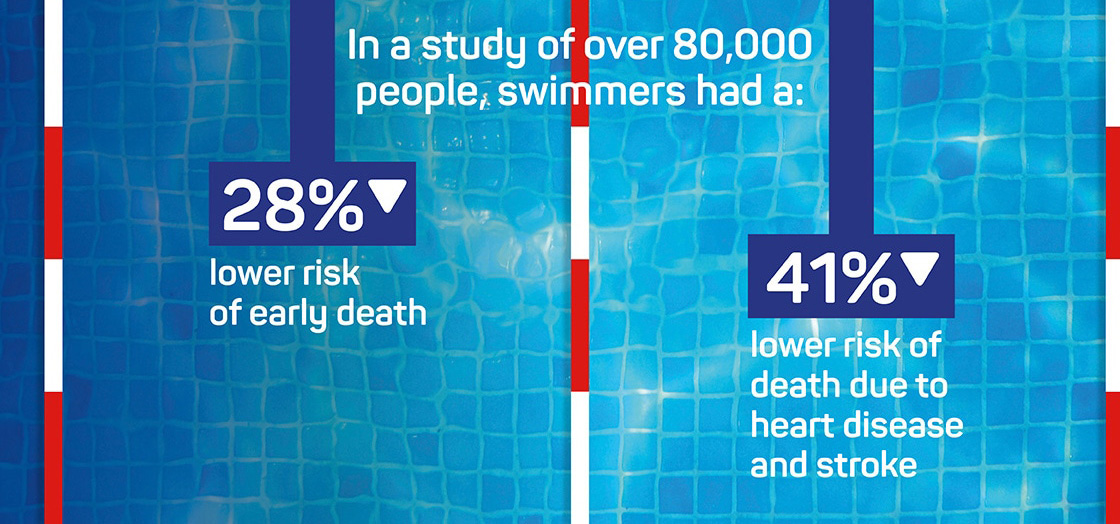
(5) Swimming is Good for your Mood and Mental Health
In today’s ever-busy world, anxiety and stress are the two biggest killers. That’s where swimming can help. Like any other workout, swimming encourages the release of “feel good” hormones like endorphins, serotonin, and dopamine. These are biochemical agents that will excite your parasympathetic part of your central nervous system, injecting a stream of happiness into your life.
(6) Stay Fit, Live Longer
Swimming exercises your heart, lungs, and even the brain. In fact, a recent study has shown that regular swimmers can live twice longer than inactive people. Research has also shown that swimming regularly can help regulate blood sugar levels and lower blood pressure. Besides, it improves flexibility, posture, balance, and coordination, all of which can do wonders for your overall well-being.
(7) Swimming Boosts Bone Strength
As we age, our bones lose density and mass, which is particularly serious in women. Like most aerobic workouts, swimming help strengthen your bones and prevent bone loss. According to a recent study conducted by a team of scientists, regular swimming can help keep osteoporosis at bay and improve bone mass.
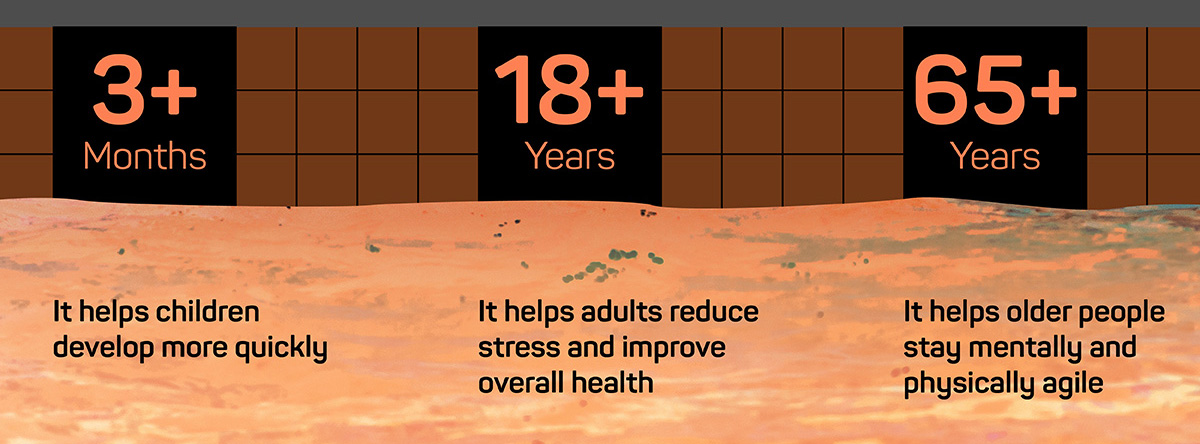
How Many Calories do your Burn through Swimming?
Right off the bat, it is important to note that swimming is a huge calorie burner. How many calories it helps you burn, however, depend on a number of individual factors, including your weight, length of workout, how vigorous the swim is, and your metabolic rate. Regardless of all these factors, swimming is indeed an amazing way to zap unwanted fat and get rid of excess blood sugar.Let’s look at an example.
Let’s say that you are a 72 kg male swimmer doing swim laps for an hour every day. In this case, you will burn approximately 420 calories per hour you swim at low to moderate pace. If you increase your pace to vigorous swimming, you can increase that figure to 716 calories per hour of intensive swimming. In comparison, a 72-kg male can burn only 315 calories while doing a low-impact activity like light jogging or walking.
How to Swim in Winter
Is it even safe to swim in winter?Of course, if you can get access to an indoor pool, then it is okay to swim during those cold winter months. However, you might want to take a swim in cold water once in a while. After all, there are several studies that suggest that it improves immunity and boosts mental strength, not to mention that swimming in frigid water can be fun and addictive.
Nonetheless, here are some winter swimming tips that you need to keep in mind:
- Don't forget to wear a wetsuit, as well as neoprene gloves and socks to keep your body relatively warm and save from hypothermia
- Load up on fuel-giving food because your body will be burning lots of calories to compensate for lost heat
- Find a swim buddy just in case things go south, and especially if you’ll be swimming in open waters
- Ensure that you are dressed for the cold. Don't leave your office or home without getting wrapped up warm, cozy and nice.
- Wear at least 2 caps, and don't forget to put in some earplugs
- Do plenty of warming up to getting your body ready for winter swimming. In fact, never dive unless you are a pro when it comes to swimming in cold water.
How to Improve your Breathing Technique and Diet Plan
If you find yourself getting winded quickly or unable to progress to the next level with your swimming, your diet plan or breathing technique could need a little work. Here’s how:- Do not hold your breath - Water can enter your sinuses if you forget to exhale underwater. You will feel winded too because of the buildup of CO2. So, don’t hold your breath to improve your breathing technique.
- Practice your technique using a mixing bowl (a decent size will do the trick). Fill it with water and dip your chin into it. Do reps of 30 seconds each, making sure to practice inhaling and using your nose.
- Give yogic breathing a try - Inhale fast to count of 1, exhale to 2 and continue building up your counts to 3, 4 and so on.
- Bilateral breathing can help take your swimmingtechnique to the next level.
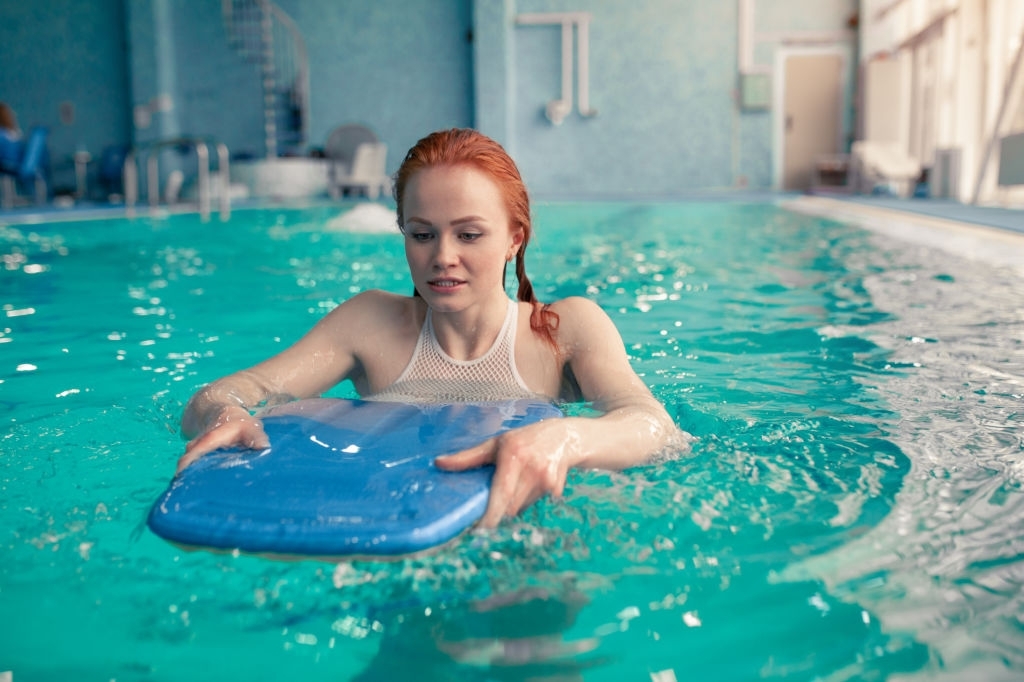
How to Overcome the Fear of Water
Is fear of water giving you sleepless nights. Here are some tried and true tips that’ll help you overcome this fear that can ground your swimming ambitions:- Don’t feel that you are being rushed. Just ease into it, and take it small by small
- Begin your swimming expeditions by letting your feet get wet before getting into the water
- Have someone you trust with you as you attempt to swim or get into the water
- Stand in pool water and try to splash some of it on your face as if you’re trying to take a bath. While you do this, try to think positively and have positive images running in your mind.
- If you are still afraid of swimming, hold onto the side of the pool and you try to practice your kicks
- Don’t forget that you are not alone. You're not the first person to attempt swimming or being afraid of water. It took Frank Skinner, the comedian up to 55 years to conquer his fear of water, and he did it!
Swimming Gear for both Adults and Kids
Learning to swim often begins with kitting yourself properly with swimming gear. Here are must-have gears that can be used by both kids and adults interested in learning to swim. If you have any difficulty in finding the swimming pools or classes near you then just say or write swimming pools near me or swimming classes near me in Google search and you will get the best results you are looking for.(a) Swimming Goggles
It’s not a good idea to let your eyes come into contact with pool water or ocean/salty water. That’s why you need a top-notch pair of goggles to keep your eyes protected when you’re underwater. If you usually wear contacts or prescription glasses, you probably want to get a pair of prescription goggles to match. Here’s to choose the right goggles for you:
- Anti-fog Swimming goggles are great because they allow for better visibility underwater
- Go for anti-leak pair to prevent chlorine-ladened or salty water from burning your eyes.
- They should be comfortable, meaning that your goggles should not press too much against your eye sockets or nose
- Are they adjustable? They should come with adjustable straps
- Which is the best color for you? Any color will work, that's your personal preference. Often, mirrored goggles help protect your eyes if you are swimming in bright sunlight
(b) Swimming Caps
A good swimming cap will help safeguard your hair and scalp from the effects of chlorine. What's the best material? More often than not, a swimming cap is made of latex. It's durable, cheap and most importantly breathable. However, there are also silicone or lycra caps. The latter is best for non-competitive swimming like water jogging.
(c) Fins
Swimming fins increase your kicking power, which comes in handy when you are still mastering your swimming basics and breathing technique.
(d) Ear Plugs & Nose Clips
As you might expect, swimming ear plugs and nose clips do what they sound like - they protect your ear and nose from getting filled with water.
(e) Swim Paddles
Here’s a handy swimming device that helps boost your legs when you are swimming as a beginner.
(f) Kick Boards
If you are looking to take your kicking and footwork to the next level as a beginner, kickboards are an excellent accessory to possess.
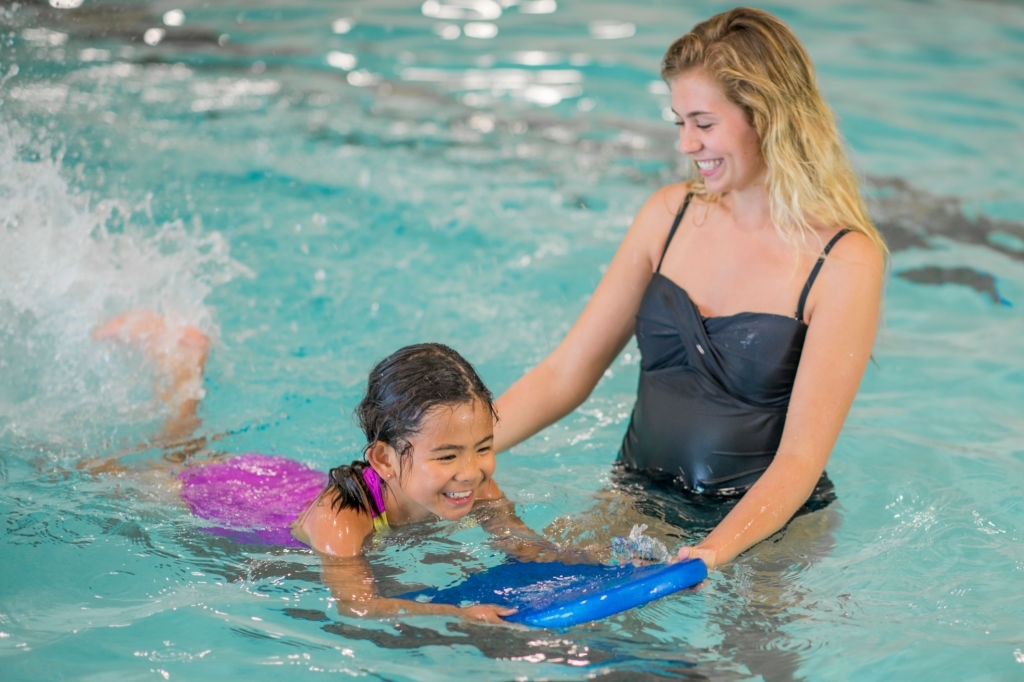
How to Open Eyes Underwater Without Goggles
Here’s a step by step guide to opening your eyes underwater without goggles:Step 1. Avoid chlorinated or salty water
If possible don’t try opening your eyes without goggles in water that has chlorine or ocean/salty water.
Step 2. Get Off your Contacts
If you must, wear only single-use, disposable contacts
Step 3. Enter with Eyes Closed
Don’t jump into the water with your eyes open
Step 4. Start by Squinting
Don't just open your eyes wide underwater. Start with a bit of squint, the move on to open your eyes fully.
Difference Between Swimming in Pool and Swimming in Open Water
While swimming in open water and in a pool are both exciting and exercising enough, there are a few differences that you might want to know:First, the water temperature can be different in open waters depending on the country, type of water body, size, season, location, and depth. Ocean water never goes beyond 18 degrees even in the summer, while lake water can go as high as 25 degrees depending on the size. On the other hand, most pools are kept at temps between 28 and 30 degrees.
Second, there's a mental difference. Swimming in an ocean, sea or lake means that the water below is dark, presenting a mental challenge that's not present when swimming in a pool.
Third, a pool restricts the lengths and sizes of your training sessions. In the open water, you have the freedom to swim as far as you can.
Fourth, practicing sighting is an important skill when swimming in open water, but not so much when you swim in a pool.
Dangers of Thunderstorms and Precautions in Open Water
When thunder roars, as they say, go inside. The same goes for swimming. Swimming when there are thunderstorm is a bad idea. This is even more crucial when you swimming in salt water because they conduct electrical charges from the lightning.Did you know that a bolt of lightning can affect you if it strikes 1/2 kilometer or closer to where you are swimming? Because water forms a uniform surface, your head that’s protruding from the surface will be the tallest thing, which makes you the highest target of lightning.
What happens if there’s a thunderstorm when you are swimming in open waters?
- Avoid metallic objects
- Get out of the water calmly
- If you are swimming as a pack, spread out
How to Perfectly Crawl or Dive Without Injuring Yourself
A wrong dive or crawl can turn into an injury and a costly nightmare. Follow these tips to perfectly crawl or dive without injuring yourself:- Dive headfirst - It might some getting used to, but it's worth it
- Find a deep pool to dive
- Practice your crawl and dive on land (just simulation) before you make an actual dive
- Move as a close to the poolside as a possible, crouch then glide inside
- Learn to dive from a standing position
- Put your lead foot on top of the pool trim before diving
Conclusion
Learning how to swim takes practice, skill, and proper gear. We hope that the above guide will help you get a headstart so you can enjoy all the health & fitness benefits that come with a swimming workout.
Your email address cannot be published. Required fields are marked*

 My Account
My Account Track Order
Track Order Sports Guide
Sports Guide
